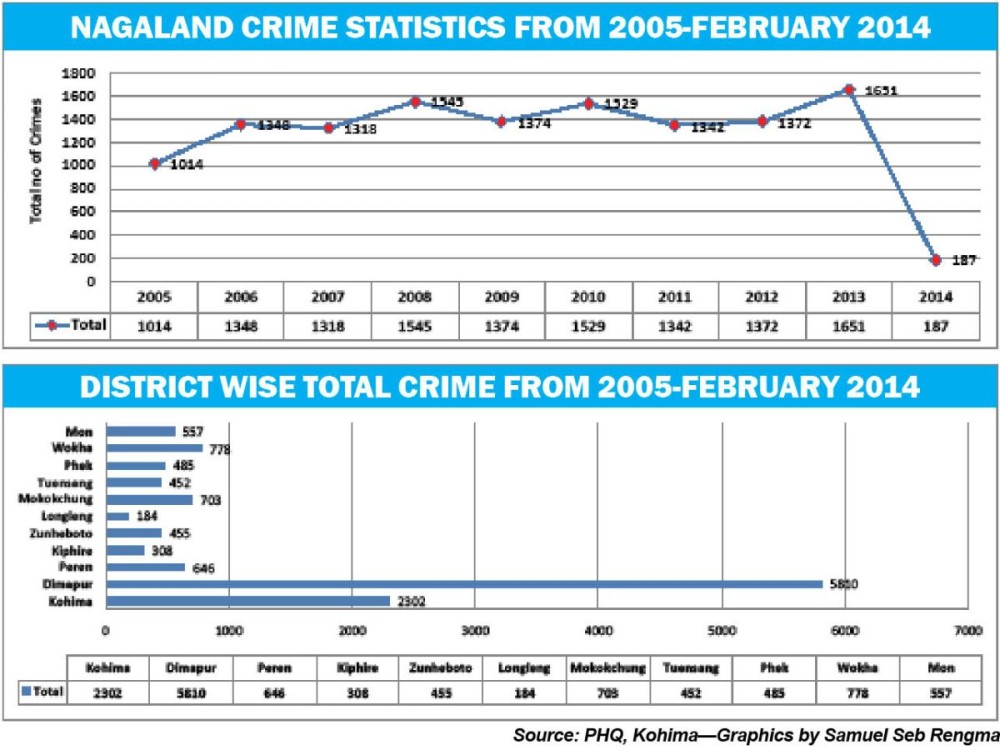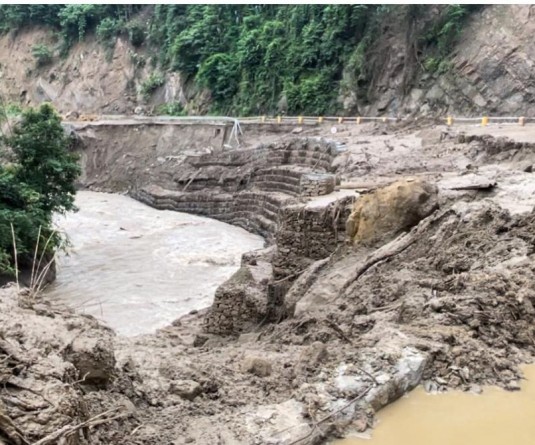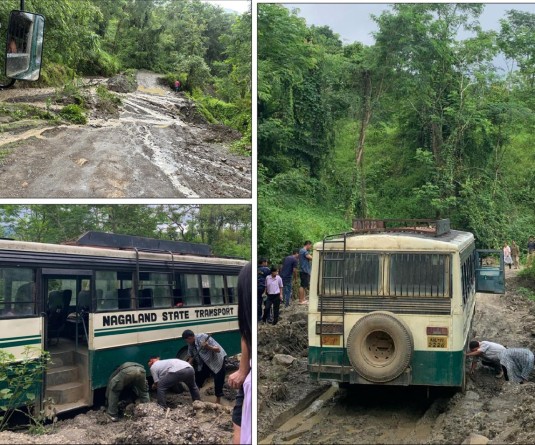
Imkong Walling
Dimapur | April 24
Dimapur | April 24
Nagaland is infamous as the trouble-torn, insurgency marred corner of India. This impression, embedded in the mainstream domain, has painted a picture of a restive place with a seemingly inexhaustible progression of turmoil, mostly political. Erase this from popular memory and an image of total harmony and peace takes shape, crime seemingly out of the frame. Data from the National Crime Records Bureau (NCRB) would somewhat testify to this. For, according to data available at the NCRB, Nagaland has the lowest crime rate in the country.
With a population of barely 20 lakh and a literacy rate in the high seventies, Nagaland is fairly free from the scourge of crime, according to the NCRB statistics of 2012. Yet figures obtained from the Nagaland Police Headquarters (PHQ), Kohima, depicts a contrasting scenario.
According to the data, Nagaland State recorded a total of 1651 IPC-related offences in 2013 in comparison to 1014 cases recorded in 2005, an increase of 62.8 percent during the nine-year period. A total 1372 cases were recorded in 2012. The year 2008 witnessed a sudden jump at 1545 reported cases compared to 1318 recorded in 2007. The number increased to 1529 in 2010, and fell to 1342 in 2011. Robbery, murder, burglary, kidnapping and dacoity, as categorised by the PHQ, are the most reported types of crimes in Nagaland State.
If the data is any indication, the incidence of crime in Nagaland has been taking an upward curve in recent times. In contrast to the distinction of having the lowest crime rate in the country, the State’s crime graph has experienced a jump of more than 60 percent in the past one decade. Is it that this era in particular is experiencing upsurge in crime or was it happening from before, but failing to get reported?
While debate ensues among informed circles over this, a look at the crime statistics of the period has indicated a steady increase in the total number of cases recorded year-wise with certain years showing marked increase in cases reported. For a lack of data from the pre-2005 era, the period from 2005 to 2013 was used as a basis of assessment. A breakup of the state-wide crime chart for the period indicated that crime against women, murder and kidnapping has inexplicably increased. Percentage-wise, crimes against women and kidnapping have witnessed a 300 percent increase in occurrence since 2005, while the number murders have increased by 80 percent.
Dimapur topped the chart in the number of IPC-related offences reported from the district each year during the period, while Kiphire recorded the lowest number of cases during the same period.
Cognisable offences, in doggedly traditional Nagaland, are known to get settled out of court far from the record books of law-keepers. Yet, if justice is being said to be done somewhere at least, why the consistent rise in crime?
(Part I of a series)





